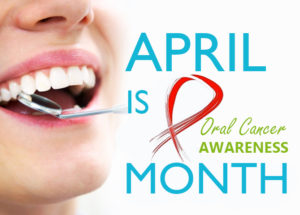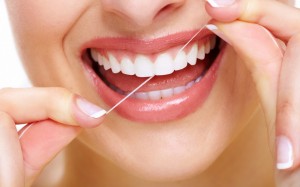When it comes to meeting new people, the old adage holds true, you’ll never get a second chance to make a first impression.And the fact of the matter is, that first impression is formed, quite literally, in the blink of an eye.
Studies show it takes just one-tenth of a second for a person to form an opinion about someone and — what’s perhaps even more shocking – almost half of the people you meet (4 out of 10) — notice a person’s smile before any other physical attribute.
Research has proven people with beautiful smiles are judged as happier, healthier, more confident, more successful, more educated, and even kinder. Not having the smile you want robs you of opportunities to radiate youth and vitality, approachability, power and a positive outlook on life.
A stunning smile can truly be your best accessory.
When it comes to improving their smiles, most people dismiss the idea because they’re concerned it will hurt, take too long or cost too much.Truth is, there are several simple fixes that can make an almost immediate improvement to anyone’s smile.Here are five of them:
1. Whiten and Brighten
White teeth not only make you look younger (teeth tend to yellow as we age), but a bright smile can have a positive effect on social and professional interactions.One study found perspective employers more likely to hire candidates with white smiles – and offer those candidates higher salaries.If you’re not happy with your smile, whitening can be an easy first step.
While over-the-counter products can help whiten teeth, the included gel is not very concentrated, so they don’t work for everyone.Additionally, the included trays can be difficult to adapt to the teeth, causing uneven results.
Custom whitening trays made by a dentist are an affordable option that fit over teeth in much the same way a slipcover fits a sofa.These trays create a seal, allowing a higher concentrated whitening gel to be held against the tooth surface, thus yielding a more even, whiter result.And, unlike over-the-counter products, custom trays whiten better between teeth, while also keeping the gel away from sensitive gum tissue.
If you’re in a hurry, in-office whitening treatments can achieve great results in a fraction of the time, making them a great choice for those attending special events like weddings and reunions. There are also in-office treatments that can whiten extra-dark or tetracycline-stained teeth.
2. Re-Think Your Drink
You might only indulge in one or two soft drinks a day, but the real question is, “How quickly are you drinking them?”Unlike aluminum cans, re-sealable bottles allow us to sip on soft drinks, energy drinks, sports drinks and other beverages throughout the day, resulting in a chronically high acid level in the mouth and a steady stream of sugar for bacteria to feast on.It’s a recipe for long-term decay along the gum line and between teeth, areas frequently missed when brushing.
The solution? If you’re going to indulge in something other than plain water, drink it in one sitting, rather than nursing it for hours.When finished, chew some sugarless gum or rinse with plain water to help neutralize acid levels and keep bacteria in check.
3. Stop Clenching & Grinding
According to the American Dental Association, 95 percent of Americans grind or clench their teeth at some point in their lives, and over 20 percent of Americans are grinding their teeth without even realizing it.
That’s a problem because, if left unaddressed, bruxism can result in split or cracked teeth, gum and bone degeneration, and problems with the temporomandibular joint (TMJ).Bruxism can also exacerbate crowding issues and quickly break down expensive dental work.
You may not be aware your mouth is slowly being destroyed.How do you know if you’re guilty of this common habit? Your dentist can tell from looking at the wear and cracks on your teeth (teeth don’t noticeably wear from just chewing food).In advanced cases, symptoms can include headaches, jaw pain, neck pain, a clicking or popping in the TMJ, and shoulder pain.
Another way to determine if you grind or clench is to take notice throughout the day.When at rest, lower teeth should not touch the upper teeth.If you catch yourself with your teeth touching, you’re clenching or grinding.And if you find yourself doing it during the day, there’s a good chance you’re also doing it while sleeping.If that’s the case, the best solution is a biteguard.
A custom biteguard made by a dentist is a comfortable piece of acrylic that not only protects teeth from wearing down, but also sets the muscles and TMJ in the correct position.This ensures the TMJ stays protected and functions properly (something an over-the-counter biteguard cannot do).A biteguard is a small investment that can save a lot of pain and money down the road.
4. Don’t Skip the Floss
A 2008 survey found only 49 percent of Americans floss daily, and 10 percent don’t floss at all. Your dentist probably harps on it all the time, but in this case the doctor really does know best.Flossing is one of the best things you can do to prevent disease and reduce your chances of needing expensive dental work down the road.
Flossing isn’t as much about removing food caught between teeth, as it is about removing plaque – the thin film of bacteria that can cause decay, inflamed gums, cavities, tooth loss and bad breath.The only way to remove that film is by scraping it off the tooth, either with a bristle or floss.
Floss is designed to clean between where the teeth touch – areas that are nearly impossible to reach when brushing.Those areas equate to about one-third of your mouth.Skip the floss, and you’re really only getting about 66 percent of your teeth clean.Unwaxed floss can be especially helpful when trying to perfect your technique because it “squeaks” against the tooth when the film is removed.While waterpicking and mouthwash are good things to add to your home care routine, they should be used in addition to, not in place of, flossing.
5. Straighten Up
Remember the time it takes to form that first impression?It takes only slightly longer —one-half second — for the human eye to judge a crooked smile.Studies have shown straightness is the first thing people assess about someone’s teeth.
Aside from poor aesthetics, crooked teeth can also cause long–term complications including tooth decay, gum disease, tooth loss, speech problems, chewing problems, worn uneven enamel, and jaw problems.Even so, most adults are in no rush to embrace the traditional “metal mouth.” The good news is that other options now exist to fix those imperfections without spending a lot of money or time in the chair.
Removable appliances can move teeth quickly, painlessly and almost imperceptibly as you’re going through treatment.Options such as Invisalign, or the more affordable Smart Moves, are ideal for people who qualify and don’t want to see brackets and wires.And the best part?Results are achieved in a matter of months.
Aside from poor aesthetics, crooked teeth can also cause long–term complications including tooth decay, gum disease, tooth loss, speech problems, chewing problems, worn uneven enamel, and jaw problems.Even so, most adults are in no rush to embrace the traditional “metal mouth.” The good news is that other options now exist to fix those imperfections without spending a lot of money or time in the chair.
Removable appliances can move teeth quickly, painlessly and almost imperceptibly as you’re going through treatment.Options such as Invisalign, or the more affordable Smart Moves, are ideal for people who qualify and don’t want to see brackets and wires.And the best part?Results are achieved in a matter of months.
It doesn’t take a lot of time or money to add sparkle to your smile. These simple steps can help enhance and ensure healthy teeth for years to come. What’s more, with the newfound confidence that is the natural byproduct of a stunning smile, you can help ensure that your first impression is the one that lasts.
 It is estimated that 53,000 Americans will be diagnosed with oral cancer this year, and 450,000 new cases are diagnosed each year worldwide. Once diagnosed, the five-year survival rate is 57%, which means 43% of those diagnosed will not survive beyond five years. Survivors typically undergo extensive surgery and reconstruction.
It is estimated that 53,000 Americans will be diagnosed with oral cancer this year, and 450,000 new cases are diagnosed each year worldwide. Once diagnosed, the five-year survival rate is 57%, which means 43% of those diagnosed will not survive beyond five years. Survivors typically undergo extensive surgery and reconstruction.
 By Dr. Shelly Pound, Lake Oconee Dentistry
By Dr. Shelly Pound, Lake Oconee Dentistry Eating vegetables keeps you healthy. Water keeps you hydrated. Sun protection keeps you from getting burned. There are some things in life we just don’t have to debate. You don’t need a study, or the results of a survey, to know it’s in your benefit to be healthy, hydrated, and comfortable.
Eating vegetables keeps you healthy. Water keeps you hydrated. Sun protection keeps you from getting burned. There are some things in life we just don’t have to debate. You don’t need a study, or the results of a survey, to know it’s in your benefit to be healthy, hydrated, and comfortable. A RECENT STORY IN THE NEW YORK TIMES has left parents worrying about their young children’s oral health. Why, you ask? Tooth decay is on the rise, especially in toddlers and preschoolers. However, even if you don’t have kids this age, or kids at all, you may have grandkids, neighbors, and/or friends with kids that might find this information useful. Spread the word!!
A RECENT STORY IN THE NEW YORK TIMES has left parents worrying about their young children’s oral health. Why, you ask? Tooth decay is on the rise, especially in toddlers and preschoolers. However, even if you don’t have kids this age, or kids at all, you may have grandkids, neighbors, and/or friends with kids that might find this information useful. Spread the word!!

 LET’S FACE THE FACTS…chewing tobacco may be smokeless, but it’s definitely not harmless! In fact, the effects of chewing tobacco on your teeth and overall health are very serious, so don’t stay in the dark.
LET’S FACE THE FACTS…chewing tobacco may be smokeless, but it’s definitely not harmless! In fact, the effects of chewing tobacco on your teeth and overall health are very serious, so don’t stay in the dark.